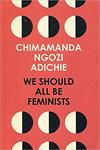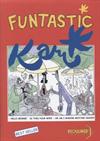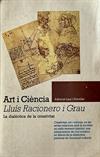
Heloise & Abelard
by Burge, James | Biographies & Memoirs | This book has not been rated.
ISBN: 0060736631 Global Overview for this book
ISBN: 0060736631 Global Overview for this book
1 journaler for this copy...
Famous 12th-century lovers Heloise (or Héloïse) and [Peter] Abelard and their lives, love, and tragedy are described in this book. Abelard was, by all accounts, one of the most brilliant philosophers of his day, while Héloïse was already quite well-educated when she became his pupil. The two embarked on a clandestine love affair, characterized by deep philosophical discussions, heartfelt letters, and erotic moments. She became pregnant and they married, but still her uncle exacted revenge by forcibly castrating Abelard. Each of them then took monastic vows and joined orders, but their collaborations in philosophy and religious works, and (one is left to hope) friendship and love continued.
Burge uses historical evidence as well as their own words, taken from well-known and newly discovered letters between the two, to illuminate their story. Due to the imbalance of source material about the two -- much exists about Abelard the teacher, accused heretic, and philosopher, while of Héloïse there is little save her letters -- it may be inevitable that the book is weighted to telling his story, with Héloïse being an important, but secondary character. Abelard is described as prideful and difficult, with no great understanding of human nature, despite his intellectual achievements.
It is Héloïse who captures the imagination and sympathy of the reader. Burge suggests that she has long had the same effect on scholars. The "new" letters discovered that may well be attributed to the pair shine additional light on their relationship prior to the tragedies that later came to pass. From these letters, it does indeed seem that the two had a most unusual relationship, founded on great mutual respect and concern. Burge includes the idea -- supported, perhaps, by the historical accounts and a fair reading of Abelard's later works, though not specifically denoted by Abelard or other first-hand sources -- that Abelard's hymns, the rule for nuns, the Hexaemeron, and the Problems of Héloïse were written while the two were working together at the convent where she was abbess. Certainly, several of those works were inspired and requested by Héloïse, if not actual works of a partnership between the two.
There were a few points to quibble with in Burge's account. At the beginning of the book it seems that there are some mathematical errors that stem from being unable to accurately gauge Héloïse's age. The introduction to Héloïse presents her as a 31-year-old woman, who has not seen Abelard for over 15 years. And yet, later, Burge chooses to present her as being a young woman of about 20 when her relationship with Abelard begins. In another place, he mentions that she would have been 10 when Abelard first came to Paris...and she would not meet him for another 15 years. Perhaps these discrepancies are simply sloppy editing and error, as the listed chronology would have made her closer to 40, not 31, in 1132. Unfortunately, it serves to unsettle the reader and makes it difficult to embrace some of Burge's other assertions, however appealing.
Burge's introduction to philosophy, Abelard's preferred method of expression and thought, is also somewhat lacking. Burge presents the method of debate known as dialectica as a new development when, in actual fact, it had been practiced for centuries by the philosophers of antiquity. It, like philosophy in general, was experiencing a revival, to be sure, but this did not mean that either could be classed as "new." (Similarly, Abelard did not coin the term theologia.) Finally, on the infamous question about angels on a head of a pin, Burge offers a short and lukewarm explanation that does Medieval thinkers a bit of disservice. (For a more thorough treatment of this question in the Middle Ages and John Duns Scotus' understanding of it -- as well as how it relates to Newton's physics -- see p. 357 of The Dream of Reason by Anthony Gottlieb.) Burge does explain Abelard's important theories -- like that of universals -- in understandable terms, however, as his focus is not medieval philosophy in its entirety, but rather Abelard and his thought.
More glaring was the account of Fulbert's (Héloïse's uncle) attack on Abelard. Burge presents some possibilities for Fulbert's actions -- his own piety, the dishonor to his charge, and his suspicion that Abelard may have been preparing to divorce Héloïse thus adding to his household's disgrace -- in fact, Burge even notes Abelard's allusion to the fact that perhaps there was something to Fulbert's suspicion of divorce. And yet, he finally determines that Fulbert had an almost incestuous interest in and passion for his niece and it was ultimately jealousy that inspired his rage. As a theory, it merits mention, but Burge continues as if it is the final truth, which is far from proven. (This is similar to his assumption of the idea of an actual collaboration between Héloïse and Abelard at the Paraclete.)
Finally, it was interesting to note that Burge said nothing about Bernard of Clarivaux being a virulent anti-Semite (again, see Gottlieb, p. 395). Considering that several of the books later chapters deal with Bernard and his persecution of Abelard, it may have fit to include that information, particularly as it helps to further champion Abelard, who at times seems to have been rather disagreeable, though never malicious.
In the end, though, Héloïse & Abelard is not about his philosophy, but about two people and the changes time wrought within them and that they worked in each other. Héloïse spent time in self-discovery and was forthcoming about her emotional self-awareness; Abelard did eventually come to regard people as emotional beings, rather than simply motivated by truth and logic, and his open-mindedness about intellectual matters is also reflected in the high regard he developed for women (particularly the nuns in Héloïse's convent, the Paraclete). One does hope, after reading the early letters of their affair, that Héloïse's plea for the restoration of Abelard's friendship and emotional regard was fulfilled by their later contact and (possible) collaboration at the Paraclete.
It is also a story about the Middle Ages and provides a very different picture of medieval France (not yet France as we know it) than the one we may normally imagine. The power of relationships and politics (how Abelard's fortunes rose and fell with that of his patron Stephen de Garlande), the struggles between Church and state, the struggles within the Church as it attempted to deal with the questions raised by burgeoning intellectualism, and the position of women in the society (not yet as curtailed as it will become, surprisingly) are all present in the book. Burge does a good job of creating the social, political, and cultural backdrop of Abelard and Héloïse and placing them firmly in that milieu. What is remarkable about them is both their rootedness in that time (they never question or dismiss the Church, for instance) and, simultaneously, the timeless qualities of their relationship.
** This is completely unrelated to the content of the book itself, but I found the font used in the hardcover edition to be quite distracting. There was too much of a space between each "A" and the rest of Abelard's name, question marks were only half as tall as capital letters, and the dashes when words were hyphenated were at a very extreme angle. It didn't enhance the reading experience for me.
Burge uses historical evidence as well as their own words, taken from well-known and newly discovered letters between the two, to illuminate their story. Due to the imbalance of source material about the two -- much exists about Abelard the teacher, accused heretic, and philosopher, while of Héloïse there is little save her letters -- it may be inevitable that the book is weighted to telling his story, with Héloïse being an important, but secondary character. Abelard is described as prideful and difficult, with no great understanding of human nature, despite his intellectual achievements.
It is Héloïse who captures the imagination and sympathy of the reader. Burge suggests that she has long had the same effect on scholars. The "new" letters discovered that may well be attributed to the pair shine additional light on their relationship prior to the tragedies that later came to pass. From these letters, it does indeed seem that the two had a most unusual relationship, founded on great mutual respect and concern. Burge includes the idea -- supported, perhaps, by the historical accounts and a fair reading of Abelard's later works, though not specifically denoted by Abelard or other first-hand sources -- that Abelard's hymns, the rule for nuns, the Hexaemeron, and the Problems of Héloïse were written while the two were working together at the convent where she was abbess. Certainly, several of those works were inspired and requested by Héloïse, if not actual works of a partnership between the two.
There were a few points to quibble with in Burge's account. At the beginning of the book it seems that there are some mathematical errors that stem from being unable to accurately gauge Héloïse's age. The introduction to Héloïse presents her as a 31-year-old woman, who has not seen Abelard for over 15 years. And yet, later, Burge chooses to present her as being a young woman of about 20 when her relationship with Abelard begins. In another place, he mentions that she would have been 10 when Abelard first came to Paris...and she would not meet him for another 15 years. Perhaps these discrepancies are simply sloppy editing and error, as the listed chronology would have made her closer to 40, not 31, in 1132. Unfortunately, it serves to unsettle the reader and makes it difficult to embrace some of Burge's other assertions, however appealing.
Burge's introduction to philosophy, Abelard's preferred method of expression and thought, is also somewhat lacking. Burge presents the method of debate known as dialectica as a new development when, in actual fact, it had been practiced for centuries by the philosophers of antiquity. It, like philosophy in general, was experiencing a revival, to be sure, but this did not mean that either could be classed as "new." (Similarly, Abelard did not coin the term theologia.) Finally, on the infamous question about angels on a head of a pin, Burge offers a short and lukewarm explanation that does Medieval thinkers a bit of disservice. (For a more thorough treatment of this question in the Middle Ages and John Duns Scotus' understanding of it -- as well as how it relates to Newton's physics -- see p. 357 of The Dream of Reason by Anthony Gottlieb.) Burge does explain Abelard's important theories -- like that of universals -- in understandable terms, however, as his focus is not medieval philosophy in its entirety, but rather Abelard and his thought.
More glaring was the account of Fulbert's (Héloïse's uncle) attack on Abelard. Burge presents some possibilities for Fulbert's actions -- his own piety, the dishonor to his charge, and his suspicion that Abelard may have been preparing to divorce Héloïse thus adding to his household's disgrace -- in fact, Burge even notes Abelard's allusion to the fact that perhaps there was something to Fulbert's suspicion of divorce. And yet, he finally determines that Fulbert had an almost incestuous interest in and passion for his niece and it was ultimately jealousy that inspired his rage. As a theory, it merits mention, but Burge continues as if it is the final truth, which is far from proven. (This is similar to his assumption of the idea of an actual collaboration between Héloïse and Abelard at the Paraclete.)
Finally, it was interesting to note that Burge said nothing about Bernard of Clarivaux being a virulent anti-Semite (again, see Gottlieb, p. 395). Considering that several of the books later chapters deal with Bernard and his persecution of Abelard, it may have fit to include that information, particularly as it helps to further champion Abelard, who at times seems to have been rather disagreeable, though never malicious.
In the end, though, Héloïse & Abelard is not about his philosophy, but about two people and the changes time wrought within them and that they worked in each other. Héloïse spent time in self-discovery and was forthcoming about her emotional self-awareness; Abelard did eventually come to regard people as emotional beings, rather than simply motivated by truth and logic, and his open-mindedness about intellectual matters is also reflected in the high regard he developed for women (particularly the nuns in Héloïse's convent, the Paraclete). One does hope, after reading the early letters of their affair, that Héloïse's plea for the restoration of Abelard's friendship and emotional regard was fulfilled by their later contact and (possible) collaboration at the Paraclete.
It is also a story about the Middle Ages and provides a very different picture of medieval France (not yet France as we know it) than the one we may normally imagine. The power of relationships and politics (how Abelard's fortunes rose and fell with that of his patron Stephen de Garlande), the struggles between Church and state, the struggles within the Church as it attempted to deal with the questions raised by burgeoning intellectualism, and the position of women in the society (not yet as curtailed as it will become, surprisingly) are all present in the book. Burge does a good job of creating the social, political, and cultural backdrop of Abelard and Héloïse and placing them firmly in that milieu. What is remarkable about them is both their rootedness in that time (they never question or dismiss the Church, for instance) and, simultaneously, the timeless qualities of their relationship.
** This is completely unrelated to the content of the book itself, but I found the font used in the hardcover edition to be quite distracting. There was too much of a space between each "A" and the rest of Abelard's name, question marks were only half as tall as capital letters, and the dashes when words were hyphenated were at a very extreme angle. It didn't enhance the reading experience for me.










